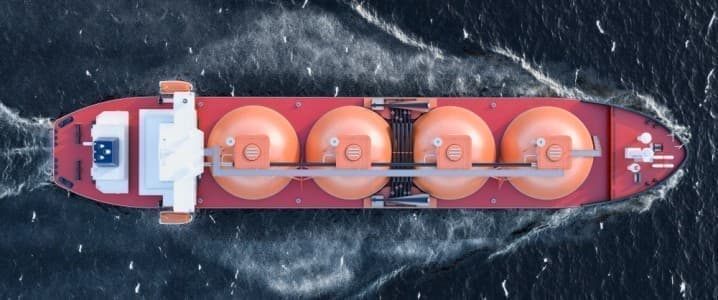
Floating liquefied natural gas (FLNG) terminals are rapidly transforming the global LNG market, with projections indicating that capacity will triple by 2030. Research conducted by Rystad Energy reveals that global FLNG capacity is expected to rise from 14.1 million tonnes per annum (Mtpa) in 2024 to 42 Mtpa by 2030, and further to 55 Mtpa by 2035. This trend signals a significant shift in how natural gas is harnessed, particularly in response to growing demand and the emergence of smaller gas fields.
Historically, FLNG projects faced numerous technical and operational challenges. Nevertheless, they have now achieved utilization rates that rival those of traditional onshore terminals. In 2024, terminals that were commissioned prior managed an average utilization rate of 86.5%, while utilization rates dipped slightly to 76% in 2025. This performance underscores the increasing reliability of FLNG as a viable alternative to onshore facilities.
Cost Efficiency and Technological Advancements
The development of FLNG has also benefitted from a reduction in capital expenditure over recent years. Initial projects, such as Shell’s Prelude, which was built in South Korea by the Technip–Samsung consortium, encountered substantial cost overruns, with liquefaction costs reaching as high as $2,114 per tonne. However, as the industry has matured, average costs have decreased significantly. Proposed developments along the US Gulf Coast now average around $1,054 per tonne, while specific projects like Delfin FLNG and Coral South FLNG report costs of $1,134 and $1,062 per tonne, respectively.
Moreover, developers are increasingly opting for vessel conversions as a cost-effective alternative to constructing new facilities. Projects such as Tortue/Ahmeyim FLNG, Cameroon FLNG, and Southern Energy’s FLNG MK II have achieved notably lower capital expenditure levels of $640, $500, and $630 per tonne, respectively, by repurposing existing Moss-type LNG carriers. This approach capitalizes on the vessels’ modular spherical tank design, which simplifies the integration of liquefaction modules.
Flexibility and Speed of Deployment
The inherent mobility of FLNG assets provides valuable operational flexibility. These vessels can be relocated or sold if projects encounter delays, allowing developers to adapt to changing market conditions. In an energy landscape characterized by tight supply yet the potential for oversupply, rapid deployment is crucial. Rystad Energy data indicates that FLNG units can be delivered much faster than traditional onshore liquefaction facilities, with newbuild FLNG projects typically completed in approximately three years, compared to about 4.5 years for onshore plants.
For FLNG vessels currently under construction, the average projected build time is even lower at 2.85 years. This accelerated timeline enhances the appeal of FLNG for developers eager to minimize risk and expedite returns. As the global energy market continues to evolve, the rise of FLNG represents a significant advancement in the efficient extraction and utilization of natural gas resources.






